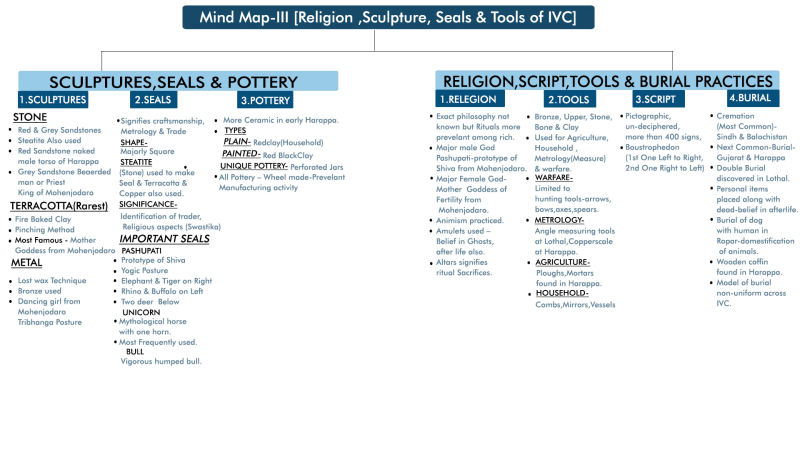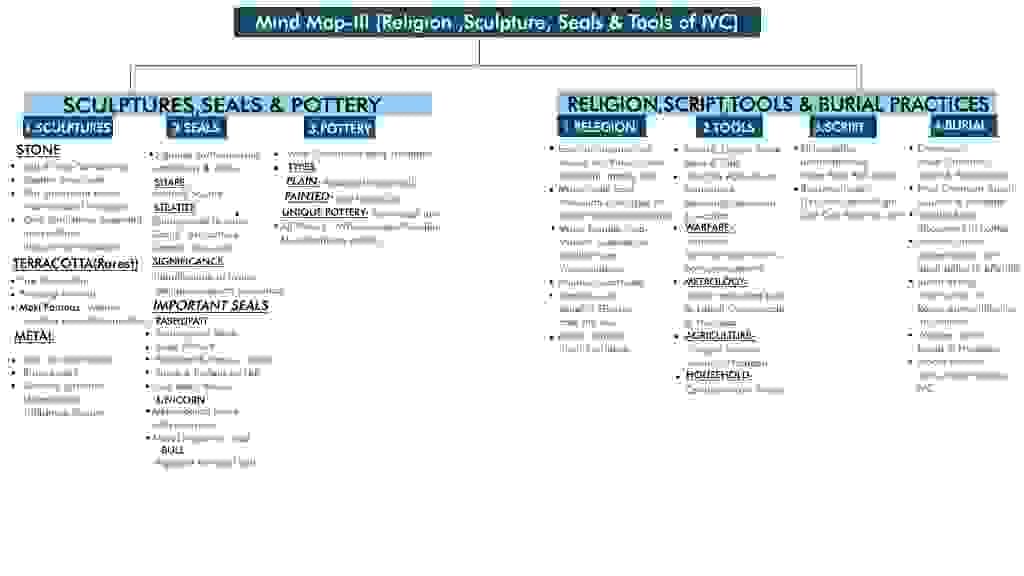UPSC Exam > UPSC Notes > Additional Study Material for UPSC > Mind Map: Religion, Sculptures & Seals
Mind Map: Religion, Sculptures & Seals | Additional Study Material for UPSC PDF Download


The document Mind Map: Religion, Sculptures & Seals | Additional Study Material for UPSC is a part of the UPSC Course Additional Study Material for UPSC.
All you need of UPSC at this link: UPSC
|
21 videos|562 docs|160 tests
|
FAQs on Mind Map: Religion, Sculptures & Seals - Additional Study Material for UPSC
| 1. What is the significance of sculptures in religion? |  |
Ans. Sculptures play a significant role in religion as they serve as visual representations of deities, religious figures, or important events. These sculptures are often used for worship, meditation, and to convey religious teachings. They help believers in connecting with their faith and deepen their understanding of religious concepts and stories.
| 2. How are seals used in religious practices? |  |
Ans. Seals have been used in religious practices for centuries. They are often engraved with religious symbols, deities, or sacred texts and are used to create impressions on documents, objects, or even the human body. These seals are believed to carry divine power and are used to authenticate and sanctify religious rituals, texts, and objects.
| 3. What is the relationship between religion and art? |  |
Ans. Religion and art have a deep and intertwined relationship. Art has been used as a medium to express religious beliefs, stories, and concepts. It can be seen in the form of paintings, sculptures, architecture, and even music. Religion often inspires artists to create works that reflect their faith, and religious institutions have historically been patrons of art, commissioning and preserving religious artworks.
| 4. How do sculptures and seals contribute to the preservation of religious traditions? |  |
Ans. Sculptures and seals contribute to the preservation of religious traditions by serving as physical representations of beliefs and practices. They provide a tangible link to the past, allowing future generations to understand and engage with religious traditions. These artworks and artifacts also help in the transmission of religious teachings and serve as visual reminders of the values, stories, and rituals associated with a particular faith.
| 5. What are some famous examples of religious sculptures and seals? |  |
Ans. There are numerous famous examples of religious sculptures and seals. Some notable examples include the Statue of Liberty, a symbol of freedom and enlightenment; Michelangelo's sculpture of David, representing the biblical figure; and the Great Sphinx of Giza, associated with ancient Egyptian religious beliefs. In terms of religious seals, the Seal of Solomon, believed to possess supernatural powers, and the Bulla, used by ancient Mesopotamian civilizations for religious purposes, are well-known examples.
Related Searches
















